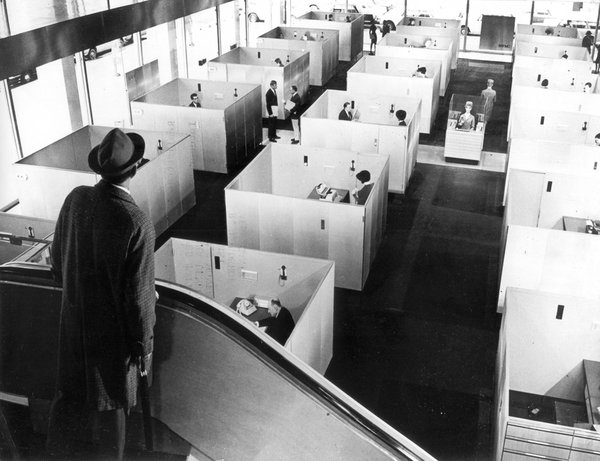Propst—a polymath with no specific background in office planning—was convinced that a more innovatively designed work space would increase both productivity and creativity. He devised an ensemble of interrelated furniture components to create a flexible “workstation” that (as its trade name Action Office suggests) contravened the essentially sedentary nature of tasks performed within it. This approach was indicated by the inclusion, along with a shelving unit and a conventional work table, of a stand-up desk.
Although advertising for the Action Office used blurred male figures to convey the go-go tempo of the early 1960s, the new product line was a commercial flop, which prompted Propst to come up with a more salable revised version, Action Office II (1968). The major difference between the two was that the second version introduced the freestanding partitions that have become the most detested aspect of the open office. As shown in newly depopulated ad schematics of Herman Miller for Action Office II, these movable walls were at first splayed at obtuse angles to convey a spacious, nonregimented feeling.
However, it took corporate customers no time at all to set them up in rigid right-angled formations, and for furniture companies less concerned with quality to flood the market with cheaper, flimsier knockoffs. The sharp recession of the early 1970s and the “stagflation” that plagued the American economy throughout the rest of that decade increased the acceptance of the open office for all the wrong reasons. Open-plan spaces that could be cheaply and easily reconfigured as the number of employees ebbed and flowed with layoffs and hirings became the new order of the day, and have remained so. Today an estimated 60 percent of American office workers are consigned to cubicles that are disliked, Saval tells us, by 93 percent of their occupants.
On the History of Office Cubicles


